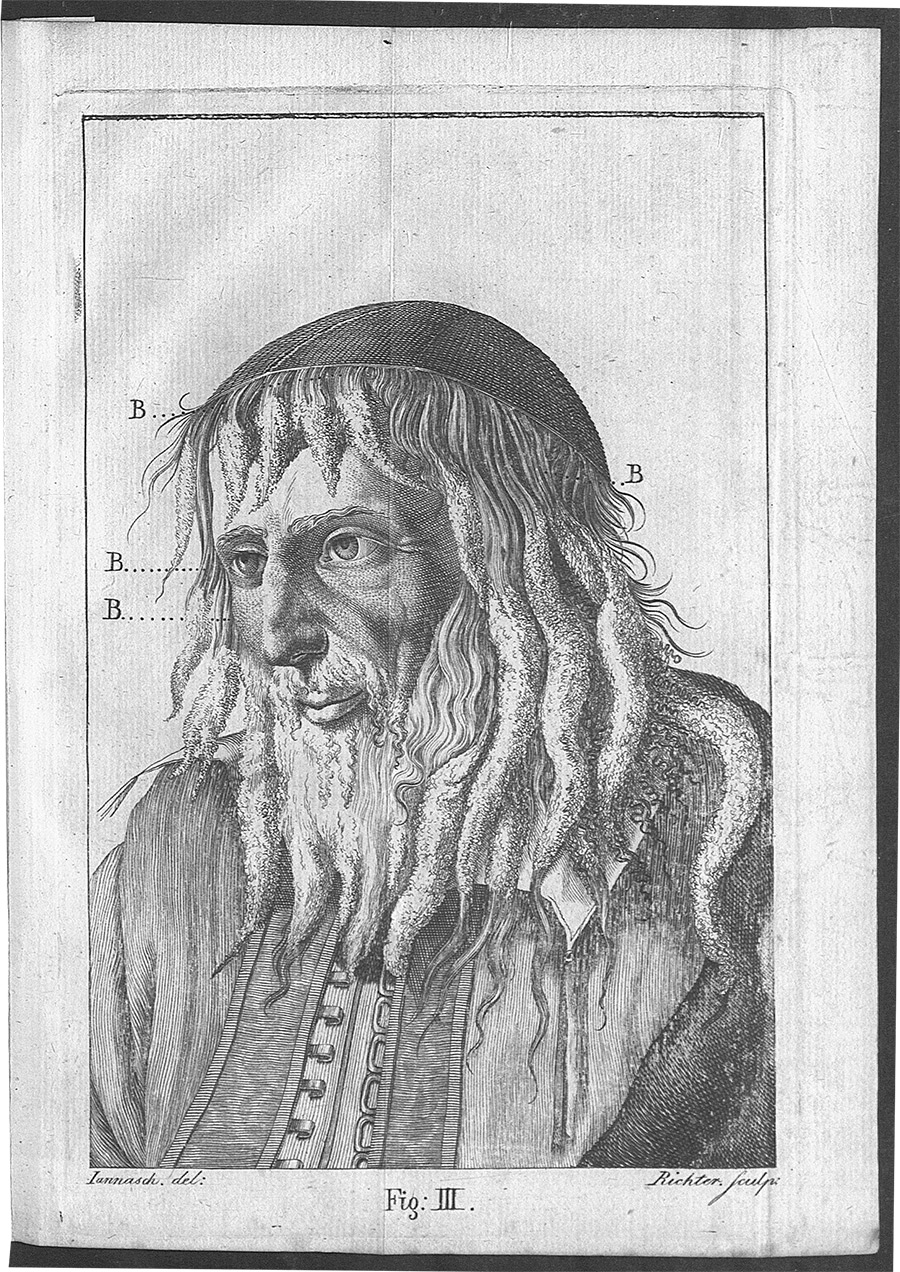Throughout the early modern period, the matting of hair was discussed in academic literature and beyond as a medical condition pertaining to Eastern Europe. Ercole Sassonia (1551-1607), an influential professor of medicine at the University of Padua, named this condition Plica polonica, in 1600, on the basis of letters from Poland describing the consequences of matting of hair in gruesome detail. Until the second half of the 19th century, hundreds of medical treatises discussed the causes and possible treatments of this allegedly harmful condition. Due to their high visibility in the region, Jews were often identified with the condition, and a frequent designation in German was Judenzopf (Jewish plait). Ashkenazi Jews reflected non-Jewish popular medical approaches to the alleged condition in their own medical practices concerning matted hair, and a long discussion about its relevance in halakhic matters
Which exhibit?
Page: Featured item
Short name for this entry
Medicalizing
Order on exhibit page
18
Turn off the details link on the exhibit page
Off
